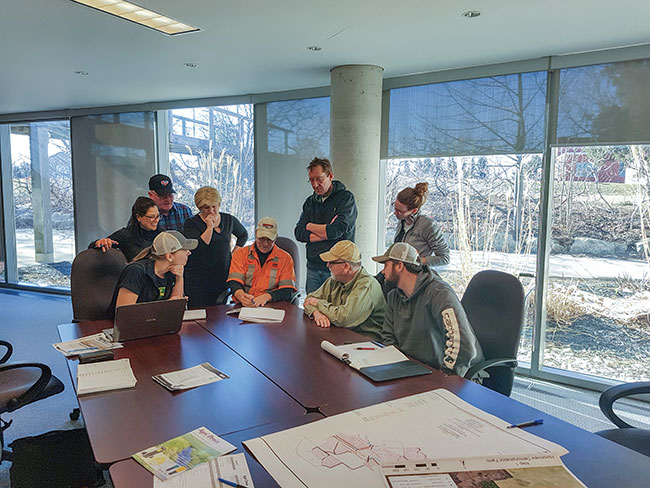
It is often said that if you want to go faster, go alone, but if you want to go further, go together. And while teamwork sounds nice on paper, it is often messy in reality.
Drains require multiple landowners to agree (and pay) together and, depending on the drain, may involve a few levels or ministries of government before the contractor even comes in. These relationships may be new or may be pre-existing and strained, with or without cause. There are so many opportunities for tension in drainage, and we tend to stumble right into them, don’t we?
If so much of our work relies on working with people, how can we get better at getting along?
Part of the issue, I think, is that we don’t speak frankly enough. When we discuss our collaborative projects, we just tell the pleasant highlights and fail to mention the hard-won lessons of collaboration. And for others to be able to speak frankly, we need to listen to them generously. By generously, I mean assuming positive intent and not jumping to any conclusions.
I attended the Conservation Drainage Network’s meeting in Fort Wayne, IN, on April 6 and 7, and gave a short presentation with Jeremy Meiners (AGREM) about the lessons learned from our Huronview collaboration. By now, if you’ve been reading Drainage Contractor, you’ll know about this innovative drainage demonstration on the field behind the Huronview Health Unit in Clinton, ON. If not, see Huronview.net.
In short, there are a lot of cooks in the Huronview kitchen. The field is owned by the County of Huron, farmed by a committee of the Huron Soil and Crop Improvement Association, was installed by four local contractors, to a design that was made by AGREM remotely with a multi-stakeholder committee. The installation was led by and is now monitored by the Ausable Bayfield Conservation Authority, who is also starting to involve provincial and university research as well.
It was an unprecedented partnership, and while the installation was successful and the partners continue to meet to oversee the research and operation of the site, the collaborative has had its fair of headaches and heartaches. The design took nine iterations back and forth, I had 25+ meetings and countless phone calls trying to keep everyone in the loop.
We underestimate the amount of extra time it takes to work together… and here were three key lessons from Huronview.
Take time to build a foundation
For nearly two decades, the Huron County Water Protection Steering Committee has been meeting quarterly to discuss local water-related issues. The County of Huron built a multi-stakeholder group with representation from agriculture, industry, environmental groups and cottage owner associations. Years of meetings have paid off. And, when Meiners spoke to the group back in 2018 about controlling drainage on a slope, he was speaking to stakeholders that had long-standing relationships and could move quickly to seize a funding opportunity. All that was missing from that table was the drainage industry and they were quick to join in.
Prioritize the priorities of all players
You might think that contractors and conservation authorities would have nothing in common, but we can see how both of them have to deliver improved water quality… or their jobs could be on the line. Water quality: it is personal!
There were five main players on the Huronview committee, and we all knew we needed all of us to stay at the table. That meant making the others’ priorities our own.
- Conservation authorities: water quality in their watersheds;
- Researchers and academics: quality of water and field data, and ability to publish results;
- County councilors and staff: keeping all of the groups and ratepayers happy;
- Farmers: drainage, yield, profitability and sustainability, public trust; and
- Drainage contractors: drainage, public trust in drainage industry.
Align on a tangible goal
While the team may have had common goals of sustainability and future hopes for a better environment, there was a more immediate project: Demo Day. With June 15, 2019 set well in advance, we were all working towards a successful installation in front of hundreds of people. Having a short-term project helped bring the group together, and the food (and beverages) that celebrated a job well done was also important.
We need teamwork to do anything important and ag drainage is no exception. Most of us have to work with others, whether we are good at it or not – so why not try to improve our teamwork skills? Drainage crews spend years working together so they are effective and safe in the field. What if we strengthened multi-stakeholder collaboration?
The Conservation Drainage Network was started to be just that and while the agenda was dominated by academic research, I was pleased to see industry reps there too and I hope I’ll see a lot more contractors and farmers there next year! DC
Print this page
